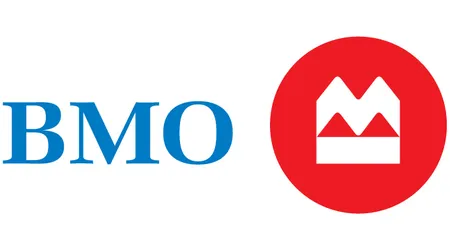Finder’s credit card team spends hundreds of hours researching 200+ credit cards to find the ones with exceptional value. When choosing a credit card, look for the benefits and features that best fit your financial needs, whether that’s a low interest, no annual fee, generous rewards, a strong signup bonus or a lengthy balance transfer offer. Our unbiased reviews and guides can help you choose a card that’s right for you.
How do credit cards work?
A credit card allows you to charge purchases to your card, which you’ll then pay for later. Each month you’ll get a statement showing what you spent over the previous month, and you can either pay off your balance in full or pay the minimum monthly payment (typically 2% to 3% of your outstanding balance).
Unlike a loan with a rigid repayment schedule and a fixed end date, credit cards give you some flexibility and are open-ended. The credit’s there when you need it, and you can pay off your debt as fast or as slowly (within reason) as you like.
Credit card jargon explained
- APR. The annual percentage rate is designed to be a benchmark for consumers, providing an annual summary of the cost of your card.
- Annual fee. Some credit cards in Canada have an annual fee; however, credit cards with annual fees typically come with more perks, such as bigger rewards, more robust purchase protection, comprehensive travel insurance or airport lounge access.
- Eligibility criteria. A list of conditions that a borrower must meet in order to be considered for credit. These vary from lender to lender.
- Fixed interest rate. A fixed rate won’t change for an agreed amount of time, even if market conditions mean that bank interest rates fluctuate based on market conditions. A fixed interest rate can be a popular option for some borrowers as it helps avoid surprises and offers more certainty.
- Credit card balance. The credit card balance is how much you’ve charged on your card — and still owe. Most credit cards have a monthly balance cycle, which means you’ll be charged interest on the money you owe if you don’t pay the balance off each month.
- Variable rate. A variable rate is the opposite of a fixed interest rate and can increase or decrease over time at the lender’s discretion. A variable rate will change when market conditions shift – for example, an increase or decrease in the Bank of Canada’s target rate.
- Charge card. Charge cards, like some of those issued by American Express, are similar to standard credit cards but with one or two significant exceptions. For example, charge cards usually have a larger spending limit and require you to pay the balance off, in full, at the end of the month. This is different than credit cards, as they allow borrowers to carry a balance. Interest is charged on any balance not repaid in full.
Why should I get a credit card?
There are plenty of situations when a credit card could be a smart choice. For starters, used carefully, they can be a cheap – or even free – way to borrow funds in the short term.
Even if you don’t need a short-term loan, using a credit card can be a smart choice. Using a card can help build a strong credit history and help improve your credit score. If you’re young or new to credit, then you probably won’t have much in your credit history. This can be a problem if you want to buy a house — and get a mortgage — or purchase a vehicle and get a car loan. A credit card is one way to demonstrate help build credit.
Other benefits include purchase protection, theft insurance and extended warranties on consumer goods — but be sure to confirm as not all credit cards offer these perks. Even if you have excellent credit and you don’t need to borrow, a credit card can still be a powerful tool. Plenty of cards come with perks or rewards – from loyalty points or cashback through to airport lounge access or travel insurance.
Best ways to use a credit card
Here are six of the best ways to use a credit card:
- Build up your credit score. If you don’t have much of a credit history because you’ve never borrowed before or your credit score is low, a credit card can be a good first step to improving it. Credit-building cards are designed specifically for those with a poor credit history in mind. Be aware that many of these credit cards come with higher interest rates compared to standard cards, so it’s important to pay off your balance in full each month.
- Get cashback and rewards. Many credit cards offer competitive cashback rates or rewards, helping you to earn something back as you spend. However, the downside is that many of these cards come with high-interest rates and those cards that offer exclusive rewards (e.g. lounge access) might charge an account fee.
- Save interest on existing debt. If you’re currently paying interest on existing credit card or store card debt, it’s worth shifting that debt to a lower interest rate balance transfer credit card. Doing so will mean you’ll avoid paying a higher interest rate for a number of months (depending on the provider), giving you time to tackle your debt head-on without worrying about interest building up. Be aware you might have to pay a transfer fee.
- Spread the cost of a purchase. If you’re planning a large purchase, such as a holiday or a new car, a low-interest credit card lets you spread the cost of your spending interest-free over several months. This can be much cheaper than other methods of borrowing, but only if you’re confident you can pay off your balance in full before the 0% deal ends.
- Insurance. Some credit cards, especially travel credit cards, come with car rental insurance and/or travel health insurance.
- Protection on your spending. Another great benefit of using some credit cards is that you’ll get purchase protection and even extended warranties.
What type of credit card should I get?
To find the right credit card, it’s good to learn the types of credit cards on the market. Here are the main types of credit cards available in Canada, along with the key benefits each card type offers.
How to choose the right credit card
- Determine what you want out of a credit card. Do you want rewards, cashback, interest-free periods on purchases, or to transfer an existing balance?
- Find providers that offer that type of credit card. Some credit card providers specialize in certain types of credit cards and usually will have very competitive products.
- Compare credit cards to find the one that best meets your needs. You should consider things like rates, fees and features.
- Check eligibility. Applying for a credit card will prompt lenders to check your credit history. This check is considered a hard check and will prompt a drop in your credit score. To avoid a hit on your credit score and a rejection letter from a lender, check a provider’s eligibility requirements.
Visa vs. Mastercard: Which is better?
Visa and Mastercard are the largest credit card processing companies globally and in Canada. Each offers a range of benefits that vary by card provider – but which should you choose? We break down the differences between Visa and Mastercard credit cards and consider the pros and cons of each.
Visa and Mastercard market share
| Visa | Mastercard | |
|---|---|---|
| Market capitalization (value) | Approx. $571 billion | Approx. $443 billion |
| Employees | Approx. 28,800 | Approx. 33,400 |
| Number of cards in circulation worldwide | 4.3+ billion | 1.1+ billion |
| Winner? |
Visa is the bigger company by a significant margin, although in recent years, Mastercard has substantially increased its market share, bridging the gap between these two credit card giants.
| Visa | Mastercard | |
|---|---|---|
| Number of countries | 200+ | 210+ |
| Number of merchants | 130+ million | Approx. 40 million |
| Winner? |
Who can get a credit card?
There are credit cards to suit almost anybody, but you’ll need to be the age of majority in your province or territory (18 or 19 years old) and a Canadian resident. Also, there are credit cards specifically for non-residents with work or school visas.
Credit cards are offered at the issuer’s discretion. That means when you apply, the card issuer will check to ensure you meet the eligibility criteria. Card issuers normally state their minimum criteria (which could include a minimum income or being an existing customer), but meeting the criteria doesn’t guarantee approval.
For premium credit cards, applicants must meet eligibility requirements and typically prove annual earnings above a certain income threshold. Applications will also need to show a good track record of responsible consumer purchases — and a high credit score (unlike credit builder credit cards and student credit cards, premium credit cards have harder and more eligibility requirements).
How much can I spend on a credit card?
If your credit card application is approved, your specific circumstances will determine what credit limit (that’s the maximum debt you can build up on the card) the issuer will offer you. Your personalized limit will depend on factors like your credit score, income, and outgoings.
Once you’ve had a credit card for a few months or years, you might want to make a request to increase your credit limit. Any increase will be at the card issuer’s discretion, but if you’ve been using your card sensibly (making repayments on time) and your circumstances haven’t changed for the worse, there’s a reasonable chance your request will be approved. Some card issuers will even proactively suggest a credit limit increase after a while.
How much does a credit card cost?
One of the downsides of credit cards is that the fee structure can be a bit complicated. Do your homework and use them correctly and credit cards can be a cheap form of borrowing (if you pay off your balance each month). You earn rewards and take advantage of benefits.
- Monthly repayments. You’re free to repay as much as you like as often as you like, subject to a small monthly minimum that’ll be outlined when your statement is issued – usually about 2% of your outstanding balance. You’ll pay a late payment fee (and damage your credit score) if you don’t make the minimum repayment by the statement due date. If you clear your full balance each month, your purchases generally won’t incur any interest – it’s when you carry a balance from month to month that the interest kicks in.
- Annual/monthly account fee. You can get credit cards with no annual fee, but more premium options (generally high-paying rewards cards) can do. The credit card annual fee is deducted from your available credit and accrues interest at the purchase rate if it isn’t paid in the first statement period.
- Interest rates. Interest is the price you pay to borrow money, but confusingly, with credit cards, different parts of your balance can incur different interest rates. Most commonly, cash advances (withdrawing cash using the card from an ATM) may have a designated interest rate that’s higher than your card’s standard purchase rate.
- Cash advance fees. Withdrawing cash on a credit card is usually a bad idea. There’s normally a one-off fee and a higher rate of interest. These extra fees can also apply to “cash-like” transactions – for example, any spending at a casino or buying foreign currency.
- Other fees. There are a few other fees that issuers can charge – for example, additional card fees (when you request an additional card for a partner or family member), balance transfer fees (when you move existing debt across to your new card), balance transfer credit cards fees (when you transfer money from your card to your current account) or fees for misuse, like going over your credit limit or failing to make a repayment by the scheduled date.
Find a credit card company: An A-to-Z list of credit card companies in Canada
Looking for a new credit card? Choose from this list of credit card companies in Canada. Read our reviews of banks like Scotiabank and Tangerine, networks like American Express and more. While we try to keep this credit card list up to date, it may not include all Canadian credit card issuers and as brands enter and exit the market.
Search credit cards by bank
 |  |  |
 |  |  |
 |  |  |
 |  |
What to consider before you switch credit cards
Before you apply for a new credit card, ask yourself the following questions so you’re clear on what type of card to look for:
- What credit card features are you looking for? If your current credit card isn’t giving you enough value, pinpoint which features you want when you switch credit cards.
- How will you be using the card? Changing cards isn’t without its inconveniences, so thinking this through first will help ensure you choose a card that you’ll be happy with in the long term. Think about how and how often you will use the credit card, and once you’ve identified your needs, you can start to look for the card that will best cater to them.
- What is the minimum and maximum amount of credit you want? When you switch credit cards, choose your credit limit with care. You need a limit that enables the occasional large purchase but doesn’t encourage you to overspend. As a guide, you should only spend up to 70% of your credit limit, which is the recommended credit utilization ratio for a good credit score.
- Do you meet the eligibility requirements for a new card? If not, your switch could go sour, particularly if you’re looking to upgrade. Always make sure you meet the eligibility requirements before getting ready to switch credit cards.
- Do you have existing credit card debt? If the answer is yes, you might want to consider a balance transfer credit card, or a credit card with a promotional balance transfer offer that fulfills your other needs, such as a low annual fee or rewards points per $1 spent.
- Is there any connection between your current provider and the new card provider? When it comes to introductory promotions such as balance transfers, you will usually need to be a new customer. Depending on the provider you’re currently with, this could limit your options when you want to switch cards for a promotional offer.
- Do you have pre-authorized payments on your current card? This is more of an inconvenience than an actual deciding factor, but one you have to address nonetheless. When you switch credit cards, you’ll have to take note of existing pre-authorizations and make the necessary calls to update your service providers with the details of your new card. This will help you avoid any possible late fees or dishonoured payment fees.
How does a credit card extended warranty work?
The extended warranty from your credit card will take place after the manufacturer’s warranty ends on the product you purchased, using the credit card. Many providers will double the length of the manufacturers warranty up to a maximum of one extra year, which means that you’ll be covered for an additional year by your credit card company once your manufacturers warranty runs out.
More than likely you’ll need to register the item with your credit card company within the first year of purchase. If you need to make a claim within the timeframe of the extended warranty, the credit card company has the discretion to opt for repair or replace of the purchase. There is a third option, which is to reimburse the funds you paid for the item. Keep in mind, this extended warranty through your credit card will not cover anything extra (damage that isn’t covered by the manufacturer’s original warranty), and damage due to regular wear and tear or due to wilful destruction or from a natural disaster will not be covered.
What is a credit card authorization form?
A credit card authorization form (or direct debit form for a bank account) is signed by you (the customer) to authorize a business to take payments from your account. This can be for a one-time charge, like renting a venue for a wedding, or a recurring charge, like a monthly subscription or gym membership.
These forms are designed to allow a business to charge you for your purchase even when you’re not physically present.
This is convenient for you because it means you don’t have to go into a physical location to pay. It also protects the business you’re making arrangements with if you claim fraudulent charges on your account when they put your purchase through.
Types of credit card authorization forms
The type of credit card authorization form you sign will depend on whether your transaction is a one-off or recurring payment.
- Single-use authorization form. This type of form is used to cover one-off purchases and cannot be used to pay for anything other than the agreed-upon charge.
- Recurring authorization form. Businesses will use this form to take multiple scheduled payments from your credit card, usually on a monthly basis and up until you cancel your contract.
When to use a credit card authorization form
Credit card authorization forms can be useful in a number of situations and can be kept on file for any amount of time, depending on what they’re to be used for.
- Recurring payments. You might sign a credit card authorization to schedule regular payments for monthly bills, magazine subscriptions, gym memberships, online accounts and other products and services.
- Repeat visits. Some companies keep an authorization form on file at places where they shop regularly so that employees can use the card to pay for purchases. For example, a manager might ask their assistant to pay for catering at the same restaurant every week using the card on file.
- Future transactions. Credit card authorization can help cover the cost of future purchases when they are ready to be processed. This could include hotel rooms or venue rentals, among many other things.
- Deposits. Authorization forms are also used as a form of insurance for certain types of purchases. For example, if you rent a room or an expensive piece of equipment and it gets damaged, the company can cover its losses with credit card authorization.
Using a credit card to pay taxes
If you owe money to the Canada Revenue Agency, you might consider paying the tax bill using a credit card. Turns out you can use a credit card to pay a CRA tax bill as long as you pay through one of the approved payment processors. However, a credit card isn’t your cheapest option — and you’ll pay a fee of about 2.5% per payment.
Paying with a credit card could be helpful if you…
- Need time to pay off your taxes. If you face a big tax bill, you don’t have to pay it all right away. By putting it on your credit card, you can pay it off over a longer period of time. Since interest rates are high on credit cards, you could potentially do a balance transfer to avoid interest for a few months or choose a low-interest-rate credit card.
- Want to reach a minimum spend for a signup bonus? Minimum spends on signup bonuses are usually a few thousand dollars. Reach yours more easily by paying your taxes with your credit card. Just make sure that the processing fee doesn’t erase what you’d gain from your bonus.
- Can pay off your credit card balance in full. If you can pay off your credit card balance in full before the end of your billing cycle, you could avoid facing additional interest.
- Want to earn rewards or cash back? If you put your taxes on your rewards credit card, you can effectively earn points, miles or cash back. Just make sure the value of your rewards is more than the processing fee.
Avoid paying your taxes with a credit card if you…
- Have trouble keeping up with payments. It’s rarely a good idea to rack up a lot of debt on your credit card without paying it off as fast as you can. If you plan on paying only the minimum toward your balance each month, consider passing on a credit card tax payment. You’ll quickly accumulate interest that could throw you into a long cycle of debt.
- Need to keep an eye on your credit score. Putting a big charge on your credit card will raise your credit utilization ratio, which could potentially damage your credit score. If you’re looking to open a line of credit soon — such as a mortgage, car loan or credit card — it may be wise to avoid damaging your credit score.
How to pay taxes with a credit card
Before you pay the CRA with a credit card, you’ll need to choose a payment processor. There are a variety of different services you can use to pay your CRA tax bill with a credit card, including:
- PayPal
- Plastiq
- PaySimply
Once you’ve picked a processor, you’ll need to:
- File and submit your taxes to the CRA
- Select a processor and visit its website
- Choose which type of tax you’d like to pay (eg: Personal taxes owed, based on your T1 forms)
- Create a free account
- Enter the required information, including how much you’d like to send to the CRA, as well as your personal information
- Submit your billing details, including your credit card information and billing address
- Double-check all information before pressing enter
Learn about credit cards
Find the right credit card
Featured credit card articles

Best joint credit cards for couples
Earn accelerated rewards on categories that matter to you and your partner, such as gas, dining, groceries and travel.
Read more…
Visa Infinite concierge service explained
With a Visa Infinite credit card, you’ll have access to a premium concierge service offering rewards and benefits to help make your life easier while you travel.
Read more…
What credit cards does Walmart accept?
Find out which payment options Walmart accepts, including Visa, MasterCard and American Express.
Read more…
Credit cards that offer free authorized users
Share your credit card with a partner or family member but watch out for extra costs. Compare cards and learn more about credit cards that offer free additional cardholders.
Read more…
Credit cards with no credit check
Despite your credit history, it is possible to get a credit card without a credit check. Here’s how.
Read more…
Students BMO CashBack Mastercard review
Looking for a no annual fee credit card that rewards you with money for your spending? Find out if the BMO® CashBack® MasterCard®* for students is right for your needs.
Read more…Read more on this topic
-
Compare Rogers credit cards
Learn how you can compare Rogers credit cards to get the best card for your unique financial situation.
-
Credit cards with no credit check
Despite your credit history, it is possible to get a credit card without a credit check. Here’s how.
-
4 best credit cards for fair credit in Canada
Check out the best credit cards for fair credit, and learn how a fair credit score of 560-659 can impact your card options.
-
US dollar credit cards in Canada
Do you travel, work or spend money in the US frequently? Find out if a US dollar credit card is the right fit for you.
-
Compare Coast Capital Savings credit cards
Compare the pros and cons of no-fee, low-interest and travel rewards credit cards on offer from Coast Capital Savings.
-
Using a credit card internationally
Going abroad and wondering whether you can use your credit card while travelling? Here’s the lowdown on credit cards vs. cash, fees, and which cards to get.
-
Best credit cards for teens under 18 years old
Find out how old you have to be to get to get a credit card in Canada and learn how your child can qualify if they’re under 18.
-
Best instant approval credit cards
Find out how you can apply for a credit card and get a response within 60 seconds.
-
Credit card insurance
Why pay for insurance? Credit card insurance has you covered when you travel, for purchase protection, extended warranties and more.
-
Credit union credit cards
Our guide covers what a credit union credit card is, how it’s different from a bank’s credit card, the pros and cons of having one and more.









